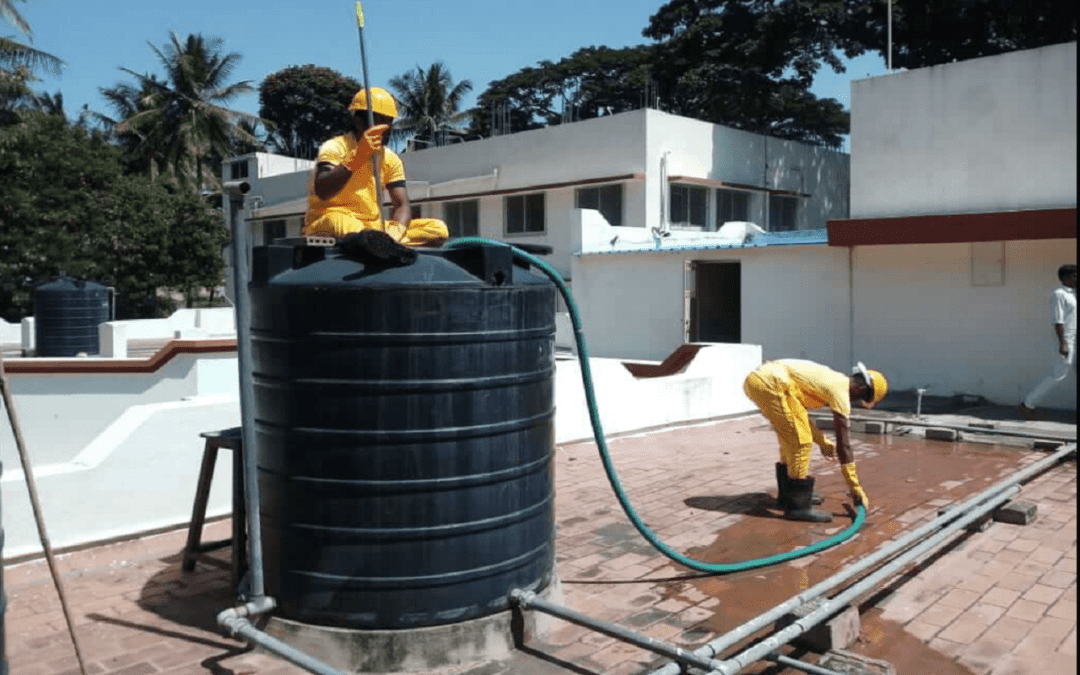Have you recently figured out about your water tank leaking and instability issues? We’ll help you navigate through elements that ensure relentless safety and performance!
Water Tank Waterproofing is an obligatory undertaking as it guarantees their long life and safety. Otherwise, leakages, cracks, and contamination may occur in the water tanks, which can result in substantial maintenance costs and health hazards. It’s all about why water tank waterproofing is important, the methods used in its implementation, and the benefits it offers.
Water Tank Waterproofing: What Is It?
The process involves putting a protective layer or coating that prevents walls from leaking through both the inside and outside walls of a tank. This process not only protects the tank’s structure but also ensures that the stored water remains clean as well as healthy for use.
Methods of Water Tank Waterproofing
Different methods are used to perform this task depending upon different factors like the type of tank, the material used for making it, etc. This section will discuss some common approaches:
● Cementitious Waterproofing
When cementitious materials are applied to water tanks, it becomes one of the most popular methods used in making them waterproof so that they do not allow any passage of water into them. It is favored due to its simplicity in application, cost efficiency, and firm bonding with concrete surfaces, thus highly effective in underground as well as overhead storage units.
● Liquid Membrane Waterproofing
This method consists of applying a liquid substance that solidifies after drying to create a flexible continuous layer called membrane over the surface area where it is applied during the curing period. In addition to being characterized by outstanding resistance to leaks, this technique works best for complex-shaped surfaces, among others, since brush rollers or sprays can be employed when its emulsion is applied to various types of storage facilities.
● Bituminous Coating
Bituminous coating refers to another commonly employed technique for ensuring that water tanks do not leak, hence termed waterproofed ones. These coatings are formulated using bitumen compounds, which when applied on any surface, leave behind strong layers resistant to moisture damage effects such as corrosion attacks associated with rusts on steel-made tanks. Such coats are best for water storing facilities like those placed on the ground or buried in it. However, they may not be suitable for potable water tanks due to potential health risks.
● Polyurethane Waterproofing
This type of waterproofing is done by putting a polyurethane-based substance that becomes a membrane that is both seamless and flexible after drying. Polyurethane-based applications have proved to be very efficient in preventing water penetration over time while being known for the strength and durability of their finishes. They include those made from concrete, steel as well as plastic materials, among others.
Benefits of Water Tank Waterproofing
It’s necessary to understand why this process is crucial for keeping the efficiency and functionality of water storage structures intact, which contributes to several advantages. Have a look at the following benefits discussed in this article:
● Protection Against Leaks and Cracks
The primary advantage of waterproofing water tanks is that it helps in avoiding leakages and cracks. This system creates a barrier against seepage through the Walls, hence minimizing the chances of damage, especially whenever there is a need for repairs.
● Improved Water Quality
Waterproofing assists in maintaining clean water collected into the tank by stopping outside substances from entering its depths, thus becoming fundamental, especially when one wants to use it for drinking purposes at home or offices where people live or work.
● Extended Lifespan
Waterproofing enhances the long service life of water tanks by avoiding water damage. For this purpose, corrosion, erosion, and other types of damage are prevented to keep the tank in use for a long time as it is supposed to be operational.
● Cost Savings
In this regard, an investment in waterproofing water tanks can result in considerable cost savings over time. The overall costs of running water storage systems are hence minimized by waterproofing, which reduces frequent repairs and maintenance requirements.
Wrapping Up
Water tank waterproofing is a vital process that safeguards the structural integrity and functionality of water tanks. By choosing the appropriate waterproofing method and ensuring proper application, tank owners can enjoy the benefits of leak-free, durable, and safe water storage systems. Whether for residential, commercial, or industrial use, water tank waterproofing is an investment that pays off in terms of longevity, water quality, and cost savings.


